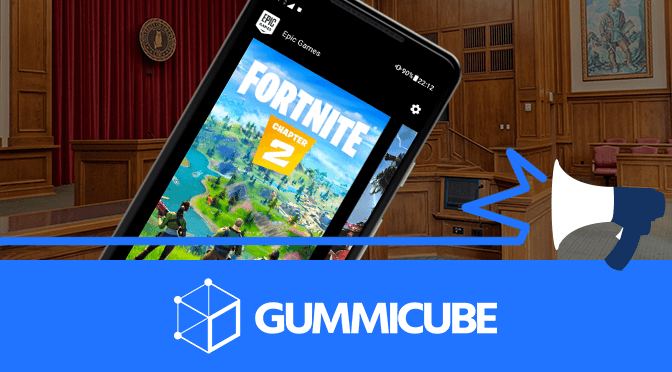Looking Back on GDC 2017
March 7th, 2017


by David Quinn
VP of Strategy & Partnerships at Gummicube, Inc.
The Game Developers Conference wrapped up last week in in San Francisco, CA, where masses of developers presented their new strategies for gaming in 2017. GDC is one of the major conferences for the year that game developers in all fields can showcase their new games, bring visibility to indie games and set precedents for the gaming industry. This year, GDC had everything from the latest in VR technology to new game engines that will improve the graphics for mobile gaming. Console, PC and mobile users will be happy with what this year’s GDC provided for the future of the game industry in 2017. Here are some of the highlights from last week.
Improved Game Engines:
The future of mobile gaming is bright and developers are trying to improve one core feature: graphics. On mobile devices, that is somewhat difficult to achieve, but Epic’s Unreal Engine 4 has recently made revisions that enable developers to use it for the foundation of mobile games. Unity Technologies released something similar, which allows devices to run better 2D and 3D graphics. Many developers are currently using Unity, which powers 38 percent of the top 1,000 free games. But Netmarbles’s Lineage2 Revolution, which is powered by Unreal, garnered almost $200 million in its first month on mobile for both iOS and Android in South Korea. Both companies are attacking the mobile market to improve mobile game apps and increase the experience for gamers on the go. Amazon has made the move into game engines to compete with companies like Unity Technologies and Epic Games, and is working with AWS and Twitch to integrate their technology. Amazon Lumberyard is a free AAA game engine that has no seat fees, subscription fees, or requirements to share revenue. They have worked on helping developers create multiplayer and connected gaming experiences through AWS Cloud services that uses Twitch to engage and grow a gaming community. Amazon Lumberyard worked hard to showcase their new technology at GDC and wants to help build the highest quality PC, console and mobile games to meet players’ demands.
VR Succeeds Again:
VR’s introduction into gaming has quickly begun growing on a global scale, and many developers are trying to integrate their games with the technology. Companies like Sony, Microsoft, HTC, Valve and Oculus already have headsets fully developed, and have nearly set the standard for how to create them. The Khronos VR initiative, formed by the Khronos Group, is an American nonprofit that focuses on creating open standards for technology. The group has seen the market for VR increase tremendously over the past year, and are looking to give developers an easier platform to create VR experiences. The Khronos VR initiative is currently working on making the market easier for developers to decide what device to offer their games on. The group has combined the smaller markets in hopes that it will make the market more viable for future and current developers.
Google Play’s New Developer Tools and Games:
2016 was a good year for Google as over 300 million new users embraced Android devices, and over 100 million new users could use relevant forms of payment. This allowed more people globally to access and buy new or favorite games from Google Play. The Nougat version of Android enabled 3D graphics in conjunction with the Vulkan applications programming interface and launched the first Daydream VR devices. Developers utilized new ways to create more visibility for their apps and games in Google Play, and Google has started working on algorithms to optimize user engagement. This means the use of ASO standards such as titles, screenshots, descriptions and the use of relevant keywords will greatly help developers bring more users to an app. Google also revealed new games that will be released on Google Play later this year. Some of those games are Transformers: Forged to Fight (Kabam), Battle Breakers (Epic Games), Virtual Rabbids (Ubisoft) and Beartopia (Spry Fox). Old and new Android users should look forward to the new games and improvements headed to Google Play this year. Pokémon Go Scored:
Pokémon GO dominated mobile gaming in 2016 and attracted millions of non-gamers to play on their mobile devices. Despite Pokémon GO not utilizing any of ASO’s common standards like updating screenshots or using relevant keywords, it was still named by GDC as the best mobile game of the year. Even though Ninantic received an award for the mobile phenomenon, if ASO standards were utilized more effectively, it would continue converting new users. The craze revolved around the game has slowly dwindled, but if the creative behind the game such as their screenshots, description, and use of relevant keywords were increased, the game could see another great year in the App Store again.
Indie Games:
Users have waited for new games, and this year will be interesting as new games on console and mobile devices will start rolling out soon. Sometimes, independent mobile developers have converted the most users, and this year, indie developers are bringing new indie games that should be just as successful as the year before. Indie games like Dandara are expected to hit the App Store and Google Play and are highly anticipated by users, especially those that are fans of Metroid. Developers for Hero Generations, Rodeo Stampede and Looty Dungeon were at last week GDC and discussed the process of making great mobile indie games and how it affects the mobile market.
Summary:
This year’s GDC gave tons of great information on the future of gaming and gave mobile developers more to look forward to as they integrate better technology to improve game graphics. GDC proved that the game industry isn’t slowing down, and mobile developers are a huge presence. Developers should keep in mind ASO standards and how to effectively utilize and implement these standards in newly strategized ways to convert more users. Companies like Unity Technologies, Epic Games and the newcomer Amazon Lumberyard, have created better game engines for developers to improve graphics, and create more growth in the mobile game industry. End users demands have been heard, and developers are looking to improve graphics, and improve visibility to the new games headed to the App Store and Google Play later this year. The developers present at GDC have been working diligently to integrate not only better graphics, but have tried to implement the use of VR technology. The game industry has opened its doors not only to PC and console games, but to mobile games that have paved the way for the future of mobile gaming. With better game engines, and Google’s improvements to algorithms that specifically target the way visibility is brought to an app, mobile developers are in for a great year. Photo credit to the Official GDC Flickr page. Follow them here:
https://www.flickr.com/photos/officialgdc/
Similar Articles

Posted on August 15th, 2020
Every time a user makes an in-app purchase or buys an app from the App Store or Play Store, Apple or Google takes a portion of the revenue. This App Store Tax has caused complaints for some developers, but with Apple and Google in the middle of antitrust hearings, tensions are continuing to grow.

Posted on August 8th, 2020
Apple has a strict set of App Store Guidelines that developers must follow in order to avoid being removed. Recently, it was announced that the guidelines will prevent developers from selling cloud gaming apps on the App Store. This could have an impact on app marketing, development and App Store Optimization.

Posted on July 7th, 2020
Apple Arcade, the App Store’s subscription game service, provides users with unlimited access to over 100 games for the price of $4.99 a month. Yet Apple can afford to be choosy, as it's cancelling several Arcade game contracts in the company’s effort to maintain subscribers.





